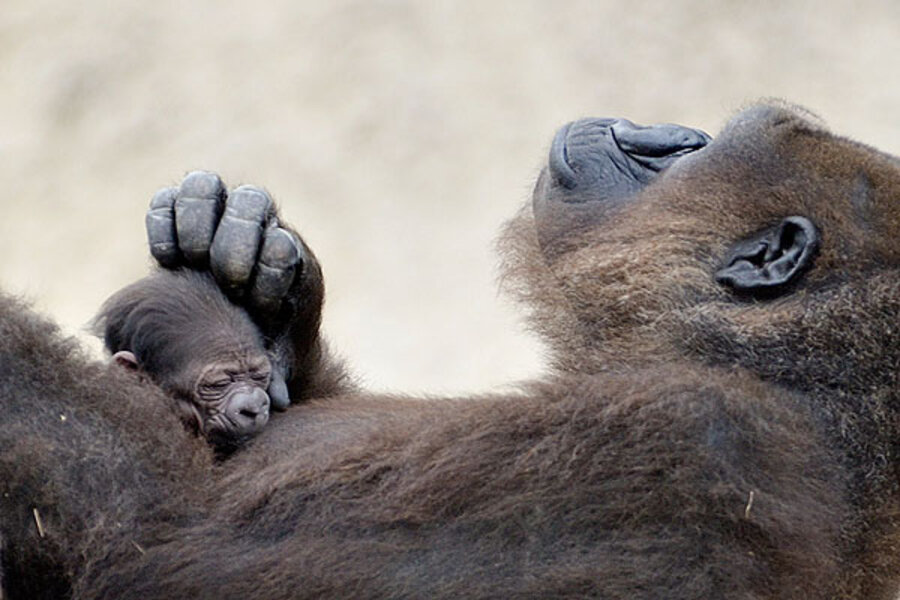Gorillas are more like humans than we knew, study says
| LOS ANGELES, CA
Take a trip to the zoo and you can see gorillas are a lot like us. But a new DNA study says we're even more similar than scientists thought.
From the evolutionary family tree, you'd expect our DNA to be the most similar to chimps, our closest relatives. The new work found that's true for the most part, but it also found that a sizable portion of our genome is closer to a gorilla's than to a chimp's.
"The chimpanzee is often cited as 'our closest living relative' and this is certainly true based on total genome sequence, but the gorilla is nearly as close a relative," Owen Lovejoy of Kent State University, who was not part of the project, said in an email.
That agrees with hints from with some smaller previous genetic studies. The latest work deciphered the entire genome of the gorilla, which Lovejoy called "a substantial achievement."
It reveals "a closer connection between our genome and that of the gorilla than was previously appreciated," Richard Gibbs and Jeffrey Rogers of the Baylor College of Medicine wrote in an editorial accompanying the work published in Thursday's issue of the journal Nature.
With the new research, scientists now have complete genetic blueprints of the living great apes — humans, chimps, gorillas and orangutans — to compare and gain fresh understanding of how humans evolved and developed key traits such as higher brain function and the ability to walk upright.
Humans and chimps evolved separately since splitting from a common ancestor about 6 million years ago.
The latest study was led by scientists at the Wellcome Trust Sanger Institute, a nonprofit British genome research center. Researchers mapped the DNA of a female gorilla and compared it to the genomes of humans and chimps.
As expected, most of the human genome was closer to the chimp's than to the gorilla's. But in about 15 percent of the genome, human and gorilla resemble each other the most. In another 15 percent, chimp and gorilla DNA are closer to each other than chimp is to human. Both those situations clash with what you'd expect from the evolutionary tree, which says humans and chimps should always be the most similar, the researchers said.
The gorilla genome was cracked using DNA from Kamilah, a 300-pound western lowland gorilla from the San Diego Zoo, which maintains a DNA library of endangered animals. Since the mapping of the human genome in 2001, there was a dash to similarly unravel the genetic codes of other animals, particularly primates. The first complete chimp genome was published in 2005 and the orangutan last year.
Like other great apes, gorilla populations in the forests of central Africa have been dwindling from hunting and disease. In decoding Kamilah's DNA, researchers said they hoped to do the same for the mountain gorilla, which is near extinction.
Nature: http://www.nature.com/nature





